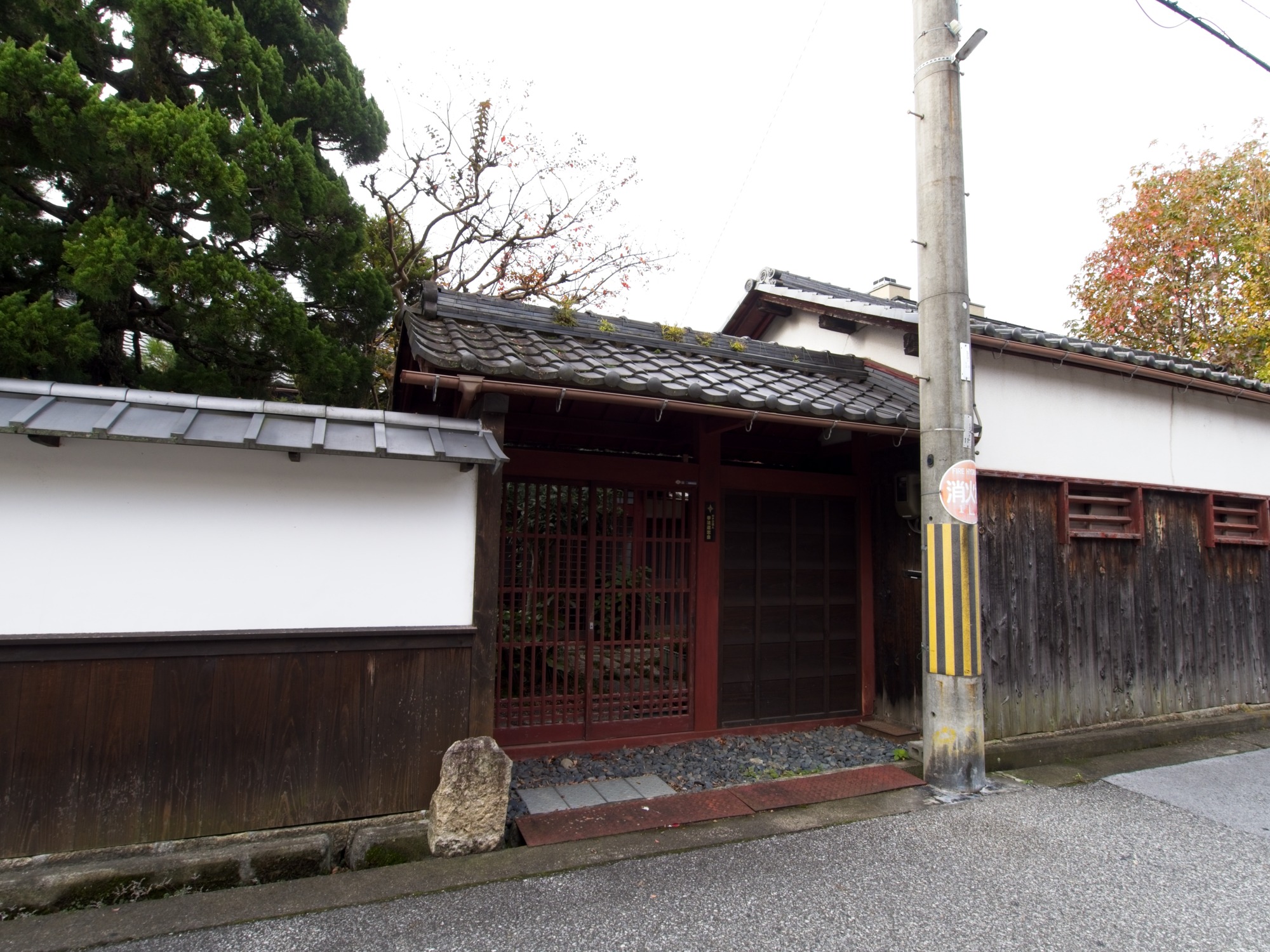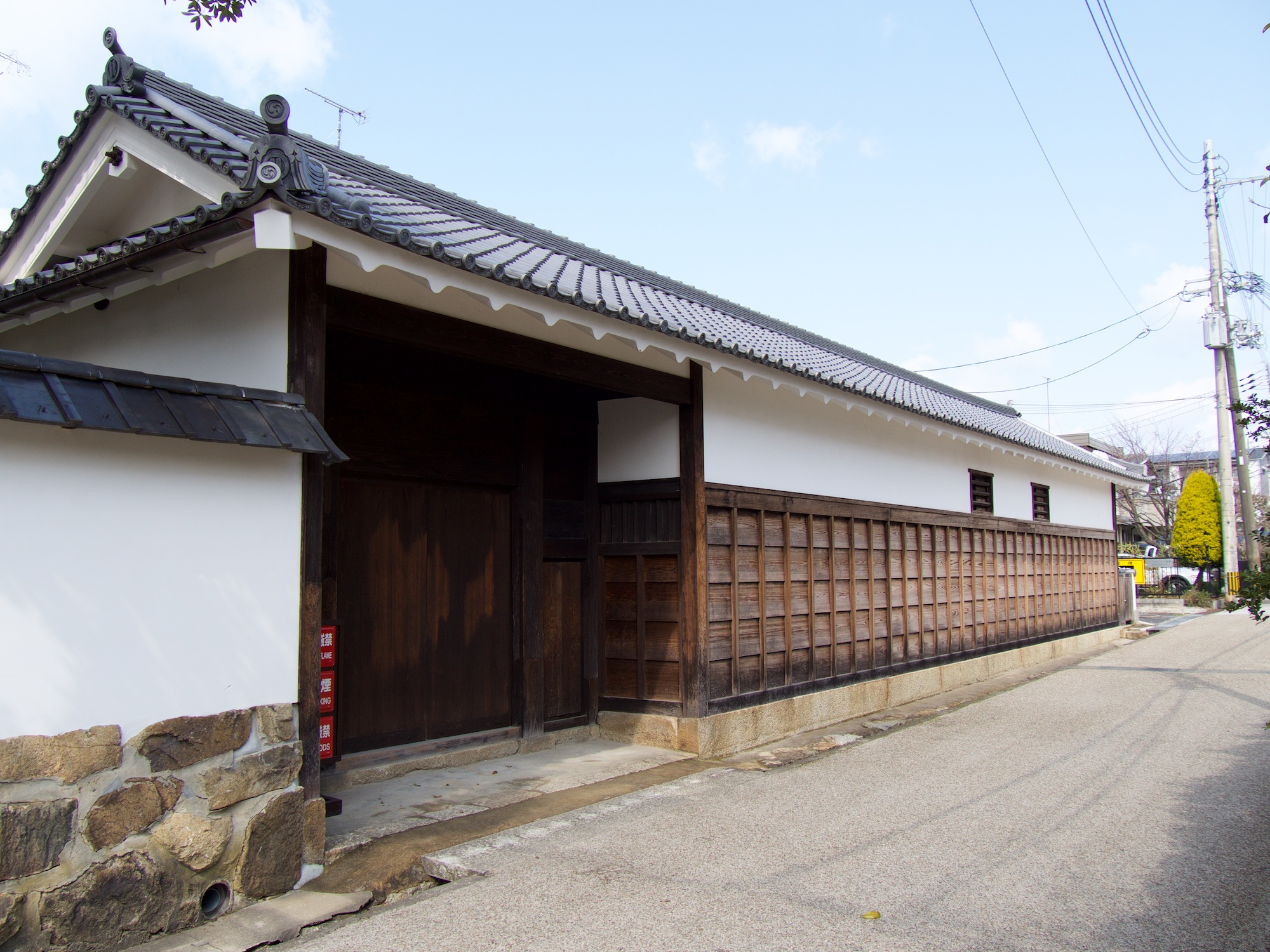Difference between revisions of "Hikone Castle Town"
| Line 71: | Line 71: | ||
</div> | </div> | ||
</div> | </div> | ||
| + | |||
| + | It would be a stretch to call it a samurai home, but the Umoreginoya, where Ii Naosuke spent many years is also marvelous Edo Period residence and garden. | ||
| + | |||
| + | |||
Revision as of 23:25, 4 December 2022
Hikone Castle Town
Hikone is one of the best castles and castle towns in Japan. I read somewhere on the Hikone website in Japanese where they humbly say there are "few" remains of the original castle town and only one upper class samurai residence. I daresay Hikone has a lot more to offer than most castles out there, especially any of the original 12. Himeji Castle is of course bigger. It has more complete and original castle structures to see, but little remains outside the main compounds. From the top of the main keep to the edge of the outer moat I would probably give more total points to Hikone Castle. The only problem is.... it would take about 3 days to see everything! It's OK to be satisfied with just the main compounds but if you have some extra time or find yourself on a second trip to Hikone, there is a lot more to offer in the castle town. They really need better materials, signage, or guide books because there is surprisingly little information out there about some things that would really interest castle fans. It would be especially helpful as they are trying to get registered as a World Heritage Site. Well, let's get a start on correcting that!
〜Middle/Upper Class samurai Homes and gates〜
Let's start with the Middle and Upper Class Samurai homes. Well, the only extant home is the Ohmura Residence which is not open to the public. It has an original house, gate and nagayamon preserving the complete picture of a samurai home. Hopefully, it will one day be open to the public. Of special note ids also the Ikeda Residence Nagayamon Gate, which is often open to the public on weekends. It is particularly interesting because it part of the gate was preserved as a stable as it originally would have been. Nagayamon often had one compartment for keeping a horse which have often been converted to other uses over the years.
Ikeda Residence Nagayamon
Ikeda Residence Nagayamon
While the homes no longer exist, Nagayamon Gates remains from several other residences
It would be a stretch to call it a samurai home, but the Umoreginoya, where Ii Naosuke spent many years is also marvelous Edo Period residence and garden.
〜Ashigaru Neighborhoods〜
The area of the Hikone Castle town I found to be most interesting, is the Ashigaru neighborhoods that have been primarily preserved along the south side of the castle between the Outer Moat and the Seri River.
One of the reasons that makes Hikone Castle history so great is that we know a lot about the lives and times of the ashigaru, the foot soldiers and lowest rung of the warrior class. In many domains they were not even considered "buke", samurai class, but they were in Hikone. The ashigaru acted as civil servants to run the machinations of the domain, conduct maintenance on the castle structures and act as guards throughout the city.
The ashigaru of Hikone had particularly good lives. In other domains, Ashigaru were typically provided a small apartment in a long row house (see annaka or niigata), but in Hikone each had their own walled plot of land with a small house, garden and a gate. This can also be seen in Kanazawa.
At the end of the Edo Period, there were estimated to be around 1200 ashigaru homes in Hikone, of which about 30 are left today and 28 just in the Seri district. Even by modern standards the plot of land is an ideal size for a single family home which has allowed the structure of these ashigaru neighborhoods to remain largely in tact even today. Certainly anyone living in typically small Japanese apartments or condos would be happy to have such a home, I certainly would !
The west side of the castle is well protected by the lake and the north and east by mountains so when the Ii designed Hikone Castle, they straightened out the route of the Seri River and created a fourth layer of defense outside the outer moat, typically considered the edge of the castle.
This area between the sotobori (outer moat) and the Seri River was filled with ashigaru homes. These neighborhoods were built with little to no space between them. The streets are so narrow you can barely fit a small car on them today and even two passing bicycles need to be careful! These streets also have numerous T-junctions, dead ends (dontsuki), and doglegs (kuichigai) to create a maze like structure and confuse and separate any attackers.
Historians actually think that this area would likely have only confused small forces or been useful for a sneak attack. In the event of a large scale battle the defenders would have probably intentionally set the neighborhood on fire either before the attack or during it to create a wall of fire and then an open battleground after the blaze that could be easily defended by using the temples in the temple district as outposts for that first line of defense. Brilliant!
photos - try to tell me they did not have battle outposts in mind when building these !
The ashigaru of Hikone were split into several divisions. Each had residences in a different part of the town. The Seri was the first and by far the largest. There were over 700 Seri-gumi ashigaru homes in this neighborhood at the end of the Edo Period. Of the 28 homes in the Seri district, some have been modernized and still lived in today, some are abandoned but and a few of them have been repaired or restored to highlight their heritage and are open to visitors for only one weekend in October every year.
The individual residences contribute to maintaining the old castle town atmosphere until today. It also allowed for a surprising number of the houses to remain in use until modern times. Even on the plots of land where the homes have been demolished in favor of new buildings, the land is sufficiently large enough for a modern family home. Because of this, the layout of the streets and town is essentially unchanged in this area. The original homes are now protected and owners are expected to maintain them. As generations and times change we may see more of them opened to the public in the future.
There are 8 homes designated as Cultural Assets by the city
Hayashi Residence Nakai Hattori Yoshii Murayama Ohta Kitagawa Tsubaiisojima katsuta
The Isojima Residence is open on weekends and holidays for visitors. The Murayama Residence has been turned into a cafe and the Hayashi Residence is now





